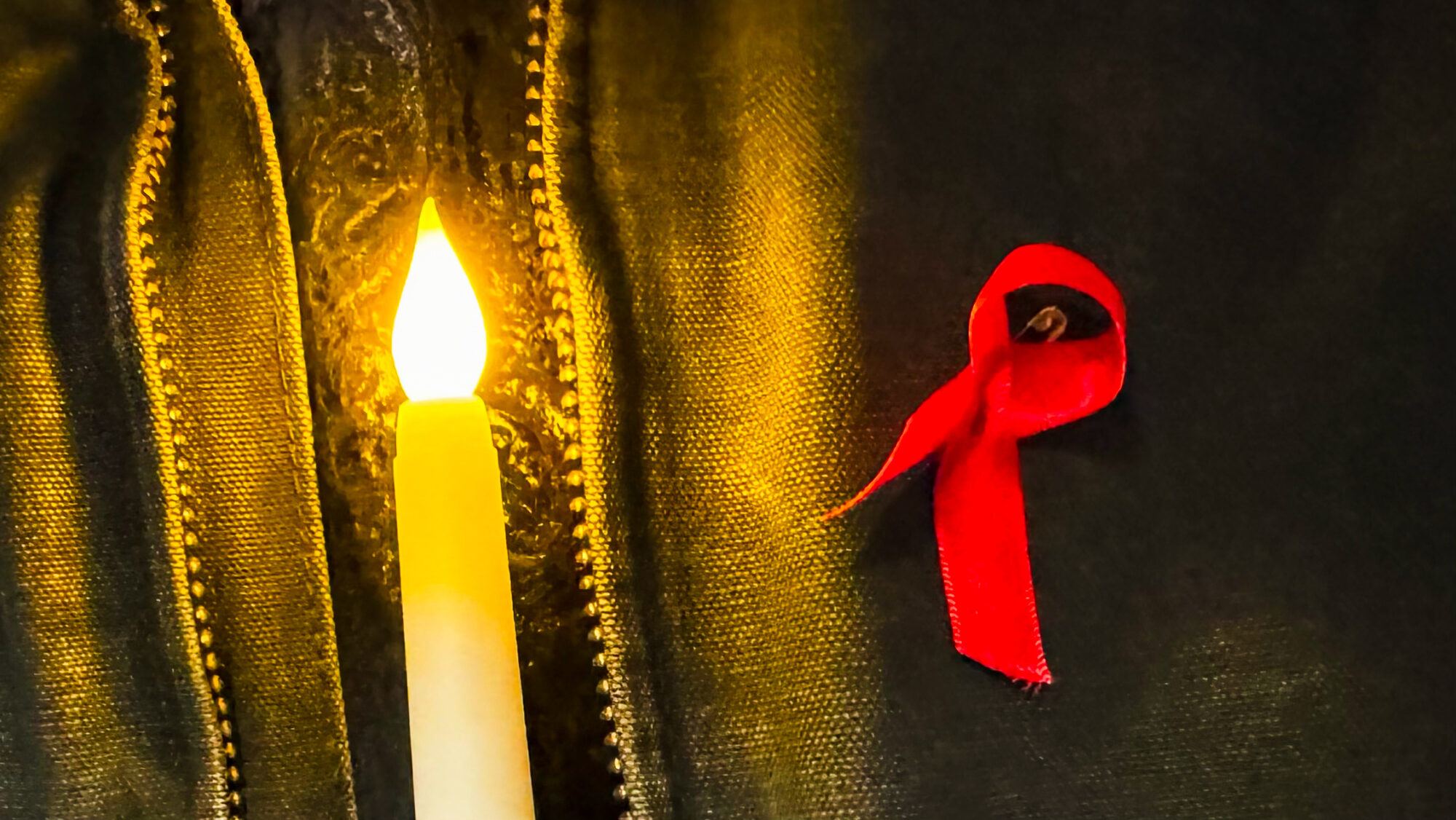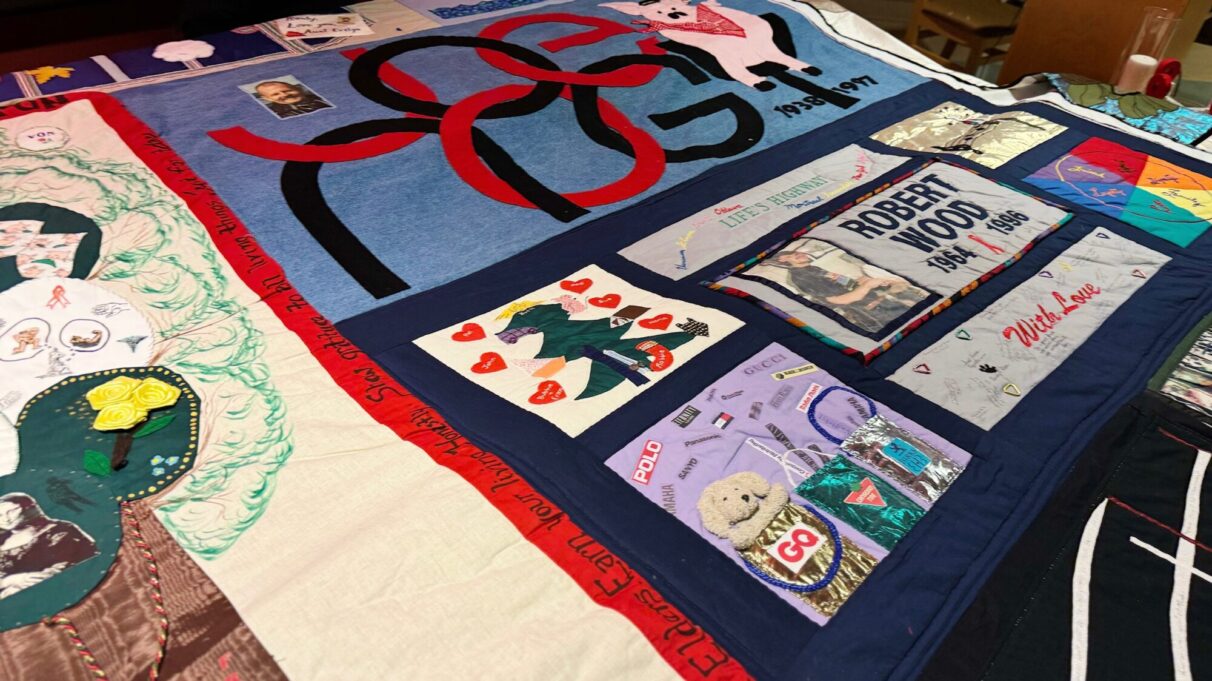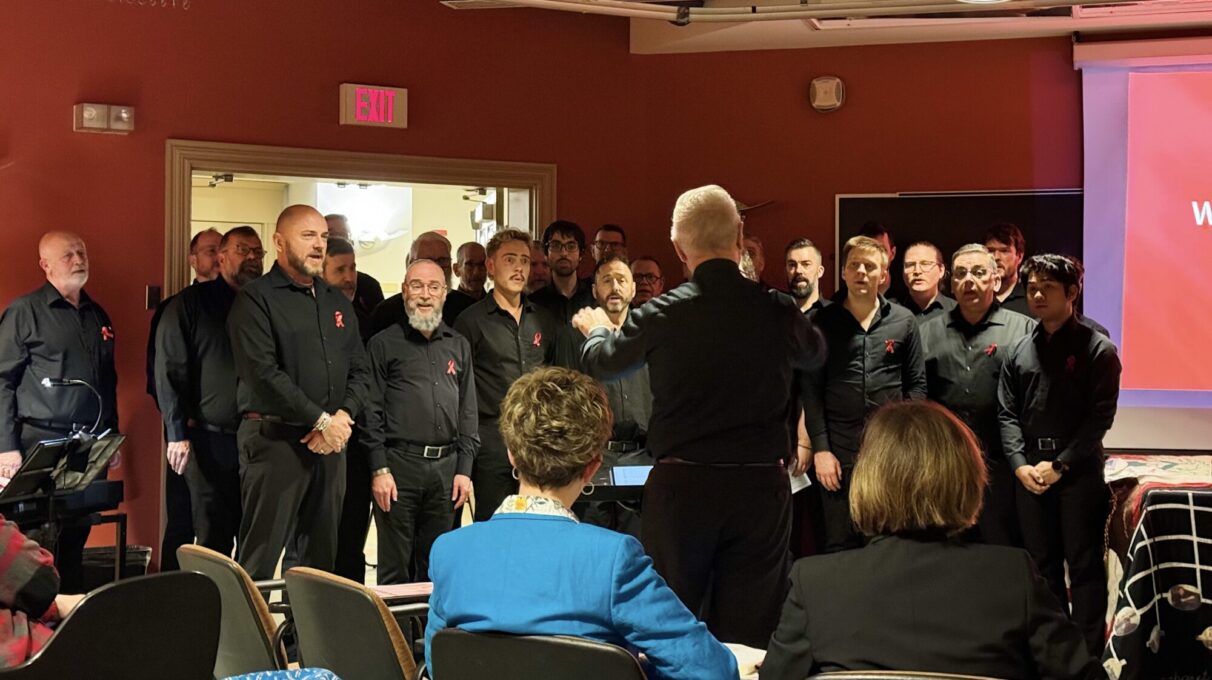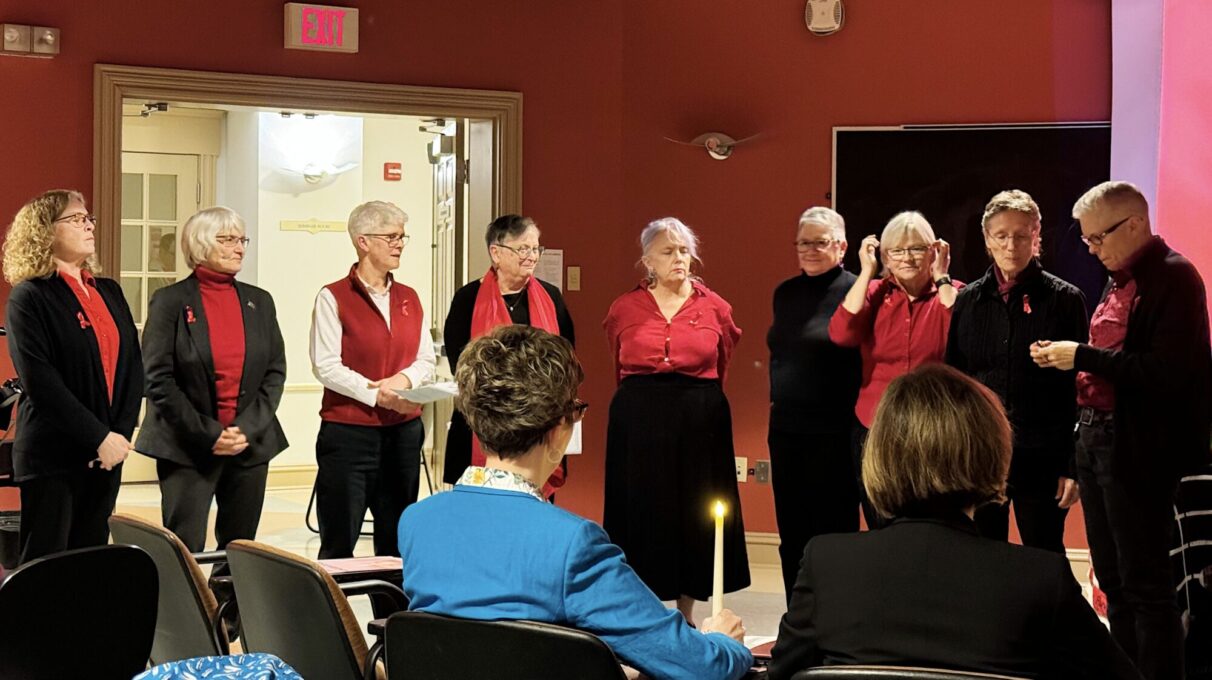AIDS vigil expresses hope but cautions against a ‘reversal of progress’
Activists and health leaders gathered to mourn lives lost and address disparities in HIV care

caption
All attendees to the AIDS vigil wore a red ribbon and lit a candle in remembrance and solidarity.A vigil to honour the lives lost to AIDS on Sunday drew a somber yet hopeful crowd to reflect on the past and advocate for a future free of the epidemic.
Jaqueline Gahagan, an associate vice-president of research at Mount Saint Vincent University, emphasized both the progress made and the challenges that remain. While advancements in treatment and prevention have saved countless lives, she warned that societal attitudes and support structures are faltering.
“What’s important to note about that is we are seeing a reversal of the progress we’ve made,” Gahagan said. “Gender-based violence and disparities continue to impact HIV prevention, and the ongoing stigma and isolation faced by those affected by HIV demands urgent action.”

caption
A memorial quilt details inspiring messages of remembrance.She reflected on a pivotal moment from the late 1980s, recalling seeing hateful graffiti at a queer advocacy organization in Ottawa.
“AIDS equals death. Die, fa***ts, die,” the message read. “That image has stayed with me, shaping my career and my commitment to addressing the stigma and silence that still surrounds HIV.”
The vigil balanced this urgent call to action with moments of remembrance. Performances by the Halifax Gay Men’s Chorus and The Women Next Door choir filled the space with songs of resilience and hope. Attendees lit candles and shared a moment of silence for those lost to the epidemic.

caption
The Halifax gay men’s chorus performs December Will be Magic Again by Kate Bush, and He Ain’t Heavy, He’s My Brother by Bobby Scott and Bob Russell.The vigil also highlighted the disproportionate impact of HIV on marginalized communities. Gahagan stressed the importance of addressing broader determinants of health, such as poverty, racism, and gender inequities, to combat the epidemic effectively.
Nova Scotia reported 27 new cases of HIV in 2022, with infection rates disproportionately affecting men who have sex with men, and those from Black, Caribbean, and Indigenous populations.
In 2023, Nova Scotia introduced expanded access to HIV self-testing kits, aiming to address gaps in early detection and care. However, the AIDS Coalition of Nova Scotia says outreach must go further to ensure equitable health-care access.
Nova Scotia recorded an HIV diagnosis rate of 2.4 per 100,000 people in 2023, well below the national average of 6.1. This rate is among the lowest in Canada, and is similar to other Atlantic provinces.
While HIV affects individuals from all backgrounds, the epidemic disproportionately affects marginalized communities in Canada, particularly sexual minorities and racialized populations.
For many attendees, the vigil served as a reminder of the power of collective action. The evening featured reflections from community leaders, performances by local artists, and a call to engage younger generations in HIV advocacy.

caption
The Women Next Door choir performs We Shall be Known by MaMuse.“I want to remind all of us that each of us still has a vital role to play,” she said. “This is precisely why the AIDS vigil continues to matter to this day, and it is a symbol — a very powerful symbol — of remembrance, advocacy, and in solidarity for the ongoing fight for HIV and AIDS awareness and equity.”
The evening wound down with a powerful rendition of He Ain’t Heavy, He’s My Brother by the Halifax Gay Men’s Chorus, reminding attendees of the enduring resilience and solidarity that have defined the fight against HIV and AIDS for decades.
Co-organizer Aaron Prosper ended the evening by sharing a poignant tradition from the Anishinaabe people: the travelling song.
“We often sing it at the end of events because we all travel to different spots, wherever we go,” he continued. “But it’s also sung for the end of life and funerals, as a memorial song in memory of those spirits that continue to walk.”
With the global health goal of ending AIDS as a public health threat by 2030, the vigil advocated continued action to ensure equitable access to care.
This event was made possible by:
About the author

Lindsay Catre
Lindsay Catre is a journalist and graduate student at the University of King’s College, where she is completing her Masters of Journalism....
